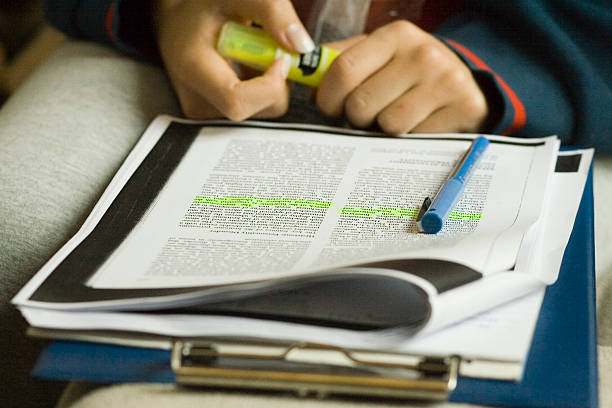20 Transitional Words and Phrases for Your Research Paper
Photo by Patrick Tomasso on Unsplash
In academic writing, the importance of clarity and coherence cannot be overstated. One of the most effective ways to achieve these qualities is through the use of transition words and phrases. These linguistic tools help to connect ideas, ensuring that your writing flows smoothly from one thought to the next. In this blog, we will explore 20 transitional words and phrases that are essential for writing an effective research paper, along with examples of how to use them.

Understanding Transitional Words and Phrases

What Are Transitional Words and Phrases?
Transitional words and phrases, also known as transition words, are words like “however,” “therefore,” and “in addition,” which are used to connect sentences and paragraphs. They serve as bridges between different ideas, helping the reader to follow the logic and flow of your writing. By using these words correctly, you can make your writing more cohesive and easier to understand.
Types of Transitional Words
There are several types of transitional words and phrases, each serving a different purpose. Some of the main types include:
- Additive Transitions: These words are used to add information or ideas. Examples include “in addition,” “furthermore,” and “moreover.”
- Adversative Transitions: These words are used to contrast ideas or show opposition. Examples include “however,” “on the other hand,” and “nevertheless.”
- Causal Transitions: These words are used to show cause-and-effect relationships. Examples include “because,” “therefore,” and “as a result.”
- Sequential Transitions: These words are used to show the order in which events occur. Examples include “first,” “next,” and “finally.”
Why Transition Words Are Essential in Academic Writing
Enhancing Clarity and Flow
Using transition words and phrases helps to enhance the clarity and flow of your writing. Consider using these phrases that you can use to improve your writing. They provide a logical connection between sentences and paragraphs, making it easier for the reader to follow your argument. This is especially important in academic writing, where complex ideas and arguments are often presented.
Avoiding Overuse and Common Mistakes
While transition words are important, it’s essential not to overuse them. Overusing transitional words can make your writing feel forced and unnatural. Additionally, using transition words incorrectly can confuse the reader and disrupt the flow of your writing. Good transition words ensure clarity and coherence. To avoid these mistakes, it’s important to use transition words thoughtfully and sparingly.
20 Transitional Words and Phrases for Your Research Paper

Here are 20 transitional words and phrases that are essential for writing an effective research paper, along with examples of how to use them:
1. In addition
Example: “The study found significant results; in addition, the data supports previous research.”
Using “in addition” helps to add information to your sentence, connecting one idea to the next seamlessly.
2. Furthermore
Example: “The experiment was conducted under strict conditions; furthermore, all variables were carefully controlled.”
“Furthermore” is another additive transition that emphasizes the addition of more information.
3. Moreover
Example: “The theory was not only groundbreaking but also highly influential; moreover, it changed the direction of future studies.”
“Moreover” strengthens the connection between ideas, adding emphasis to the information presented.
4. However
Example: “The initial hypothesis was supported; however, further research is needed to confirm these findings.”
“However” is an adversative transition that introduces a contrast or exception to the previous statement.
5. On the other hand
Example: “The results were promising; on the other hand, there were some limitations that need addressing.”
“On the other hand” is used to present an opposing viewpoint or alternative perspective.
6. Nevertheless
Example: “The sample size was small; nevertheless, the findings provide valuable insights.”
“Nevertheless” introduces a contrasting idea while acknowledging the validity of the previous statement.
7. Although
Example: “Although the experiment was successful, there were some unexpected outcomes.”
“Although” is a subordinating conjunction that introduces a dependent clause, showing contrast or concession.
8. Because
Example: “The results were significant because the methodology was rigorous.”
“Because” is used to show a cause-and-effect relationship, explaining the reason behind the result.
9. Therefore
Example: “The hypothesis was supported; therefore, it can be concluded that the treatment is effective.”
“Therefore” is a causal transition that indicates a logical conclusion or result.
10. As a result
Example: “The intervention was implemented; as a result, the patient outcomes improved.”
“As a result” highlights the consequence or outcome of a preceding action or event.
11. Consequently
Example: “The policy was changed; consequently, there was a notable increase in compliance.”
“Consequently” is another causal transition that shows the effect or result of an action.
12. First
Example: “First, the data was collected from various sources.”
“First” is a sequential transition that indicates the beginning of a series of events or steps.
13. Next
Example: “Next, the data was analyzed using statistical software.”
“Next” continues the sequence, indicating the following step in a process.
14. Finally
Example: “Finally, the findings were presented at the conference.”
“Finally” signals the end of a sequence or the final step in a process.
15. In summary
Example: “In summary, the research highlights the need for further study in this area.”
“In summary” is used to summarize the main points or findings of a discussion or argument.
16. To conclude
Example: “To conclude, the evidence strongly supports the proposed theory.”
“To conclude” is used to introduce a conclusion or final thought.
17. Overall
Example: “Overall, the study provides new insights into the phenomenon.”
“Overall” is used to provide a general summary or overarching statement.
18. In short
Example: “In short, the findings challenge existing assumptions.”
“In short” is used to summarize a point concisely.
19. In brief
Example: “In brief, the results indicate a positive correlation.”
“In brief” is another summarizing transition that provides a concise summary.
20. Although
Example: “Although the findings are preliminary, they suggest potential avenues for future research.”
“Although” is used to introduce a contrasting idea or to show concession.
Practical Application in Research Papers
Photo by Firmbee.com on Unsplash
Enhancing Clarity and Flow
Using transitional words and phrases can significantly improve the clarity and flow of your research paper. They help to connect ideas, making it easier for the reader to follow your argument. Using transition words is an effective strategy you can use in your writing .

Examples in Context
- Connecting Ideas: “The theory was revolutionary. In addition, it provided a new framework for understanding social behavior.”
- Contrasting Information: “The results were positive. However, there were some unexpected outcomes that need further investigation.”
- Showing Cause and Effect: “The intervention was successful. As a result, patient outcomes improved significantly.”
- Summarizing: “The research was comprehensive. In summary, it offers valuable insights into the subject.”
Improving Paragraph Transitions
Effective paragraph transitions are crucial in academic writing. Starting a new paragraph with a transition phrase can help to introduce new ideas and ensure that your writing flows logically. For example:
- “Furthermore, the study also examined the impact of environmental factors.”
- “On the other hand, the control group did not show significant improvement.”
Using Transitional Words in Complex Sentences
Transitional words can also be used within complex sentences to show cause-and-effect relationships. For example:
- “Because the sample size was small, the results should be interpreted with caution.”
- “Although the intervention was effective, further research is needed to confirm its long-term benefits.”
Conclusion
Transitional words and phrases are essential tools for enhancing the clarity and coherence of your research paper. They help to connect ideas, making your writing more logical and easier to follow.
Remember to use transition words thoughtfully and sparingly to avoid overuse and ensure that your writing flows naturally. Practice incorporating these words into your writing, and consider using resources like paraphrasing tools, writing assistants, and thesauruses to find and use transitional words effectively. Transition words can also be found in various writing resources online.
By mastering the use of transitional words and phrases, you can make your research paper more cohesive, engaging, and professional. Using transition words are used to ensure a smooth narrative structure. Using transition words are used to ensure a smooth narrative structure. Using transition words are used to ensure a smooth narrative structure. Happy writing!







